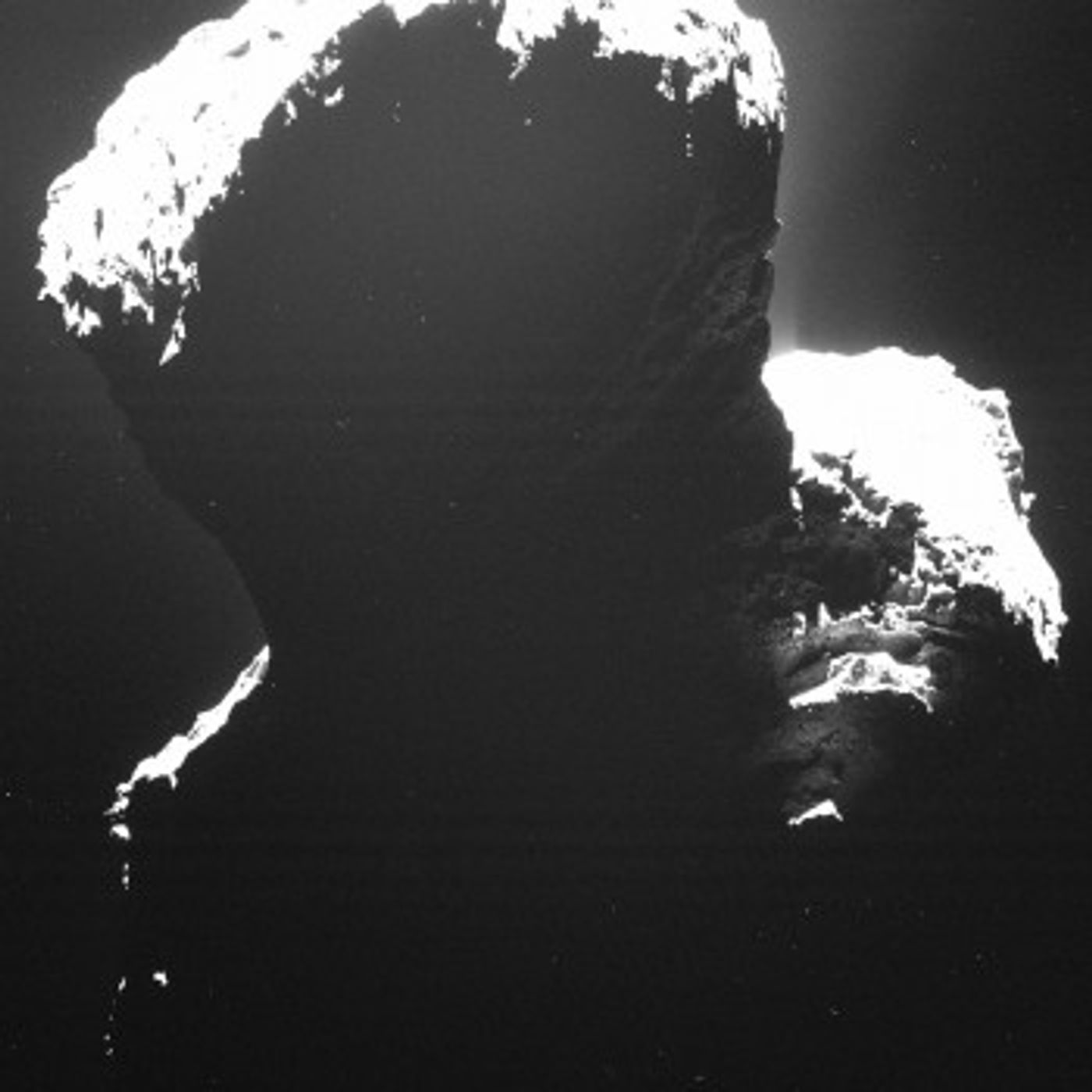Rosetta Spacecraft Gets First Look at Comet 67P's South Pole
The European Space Agency (ESA) continues to monitor Comet 67P in our Solar System as it has been doing since last year. The agency continues to get incredible shots of the comet, as well as learn more about its formation. Just a couple of days ago, we shared with you how scientists believe that 67P’s dual-lobe design may have been the result of a low-speed collision.
This week, the ESA obtained more photographs from Rosetta using the on-board Microwave Instrument for the Rosetta Orbiter (MIRO), with one of the photographs showing the “dark side” or the South Pole of the comet, which has never been photographed before. What’s more is the photograph has been taken immediately after a long Winter on the comet.

Scientists now believe that the Southern surface of Rosetta may host icy patches below the surface, as deep as “tens of centimeters,” which are thicker than any ice patches anywhere else on the comet.
The odd dual-lobed shape of the comet makes the seasons very irregular. It takes 6.5 Earth years for the comet to orbit the Sun, and during that process, seasons are unevenly distributed between the two lobes due to the fact that they affect the rotation of the comet because of the conflicting gravitational effects of each lobe.
Because of the complexity of the rotational seasons on 67P, it has been incredibly hard for scientists to get a good shot of the South pole of the comet during (or just after) its Winter season like this. Moreover, Rosetta has only been at the comet since last year, and since the seasons are spread out along a 6.5-year orbit, there is still much more to study.
Mathieu Choukroun from NASA's Jet Propulsion Laboratory is leading a study based on the details being picked up by MIRO. The information being obtained suggests ice is present several centimeters below the surface:
We observed the ‘dark side’ of the comet with MIRO on many occasions after Rosetta’s arrival at 67P/C-G, and these unique data are telling us something very intriguing about the material just below its surface. Surprisingly, the thermal and electrical properties around the comet’s south pole are quite different to what is found elsewhere on the nucleus. It appears that either the surface material or the material that lies down to a few tens of centimeters below it is extremely transparent at the MIRO wavelengths of 0.5 and 1.6 mm, and could consist mostly of water ice or carbon-dioxide ice.
It’s believed that the odd seasonal changes on 67P lead to cycles of precipitation and freezing, which over time, work the liquid into the ground where it then freezes come Winter.
Currently, MIRO has been the only device aboard the spacecraft capable of detecting anything on the Southern surface of 67P, but with the Winter season coming to an end, there will be more light and more of 67P will be exposed, allowing Rosetta to use more of its equipment to reveal more of 67P’s surface and hopefully help scientists to learn more about it.
Source: ESA








